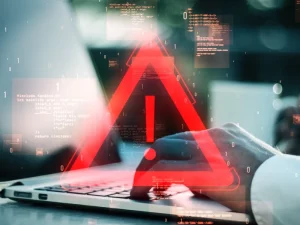AI-generated images were once a novelty, impressive, surreal, and mostly harmless. However, as the technology powering them becomes increasingly sophisticated, their use has expanded far beyond art or entertainment. In today’s digital landscape, the creation of synthetic images by artificial intelligence has become a double-edged sword: capable of assisting creativity and automation but also weaponized for deception, impersonation, and data manipulation.
Within cybersecurity, these hyper-realistic visuals now represent a growing category of threats. They blur the line between real and fake, making it harder for humans and machines alike to validate identity, verify sources, or detect manipulation. What once seemed like an artistic experiment now demands serious security attention.
How AI-Generated Images Work
AI-generated images are typically created using deep learning models such as Generative Adversarial Networks (GANs) or diffusion models. These systems learn from vast datasets of real images and generate new visuals based on patterns they have seen often, creating content that is indistinguishable from real-life photos.
While their applications in marketing, media, and design are well documented, the same technology can also generate; fake social media avatars, synthetic evidence, AI-crafted phishing lures, false biometric data, etc. The power and accessibility of these tools mean they can be used for highly convincing visual deception, by anyone and anywhere.
Cybersecurity Threats from AI-Generated Images
The dangers are not hypothetical. Cyber attackers are already using synthetic imagery in targeted campaigns. These images can bypass visual verification methods, deceive users, and even exploit AI-based recognition systems. Here are some of the most pressing threats:
- Deepfake Identity Fraud
AI-generated “faces” can be used to create fake profiles on social media or internal communication platforms. These “people” do not exist but can build trust online, infiltrate conversations, and collect intelligence. A technique increasingly used in espionage and business email compromise (BEC) scams.
- Spoofed Authentication and Biometrics
Facial recognition systems are vulnerable to high-quality synthetic images. Attackers may use these visuals to bypass biometric checks or deceive automated identity systems, especially in low-friction onboarding environments.
- Social Engineering with Visual Deception
Phishing is no longer just about emails and links. Attackers now use AI-generated visuals (e.g., fake ID cards, screenshots, or even UI mockups) to make fraudulent requests look authentic. These images lend credibility to scams and reduce suspicion, especially in high-pressure situations.
- Disinformation Campaigns
AI-generated images are also a tool for manipulating public opinion. Fake photos of events manipulated scenes, or synthetic “evidence” can be spread rapidly to influence narratives, spark controversy, or damage reputations. For cybersecurity professionals, this expands the threat landscape into psychological and informational domains.
Defensive Strategies Against Visual Manipulation
Defensive Strategies Against Visual Manipulation are essential for cybersecurity teams to combat synthetic visuals. These strategies include reverse image search and metadata analysis, AI-based detection models, user education and visual hygiene, and verification protocols. Tools that trace image origins or flag missing metadata can help detect fakes. Specialized algorithms are being developed to spot visual inconsistencies, compression artifacts, and subtle generative flaws invisible to the human eye. Enforcing secondary identity verification can reduce reliance on static image validation.
What to Look Forward in the Future
AI-generated images are part of a much larger trend in synthetic media that will continue to shape how we perceive trust online. For cybersecurity, the goal is not to fear these tools but to understand how they can be exploited and to build proactive defenses accordingly. As attackers evolve, so must our ability to critically assess not only text and code but visuals as well. The more convincing an image appears, the more critical it is to verify it.
Terrabyte remains committed to helping organizations stay ahead of these evolving threats by delivering awareness, solutions, and security expertise that adapt to this next generation of digital deception.
Contact Terrabyte Today!



